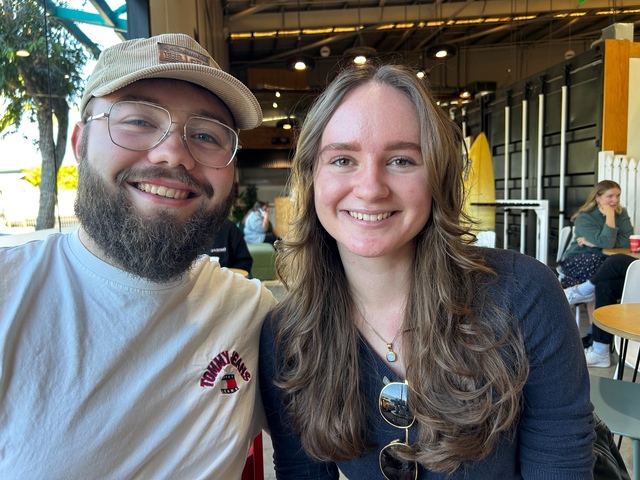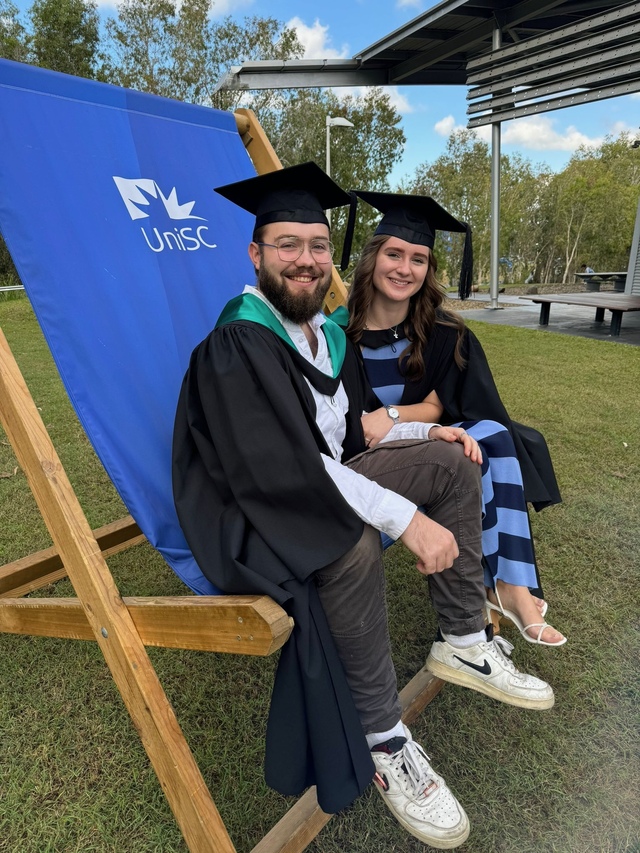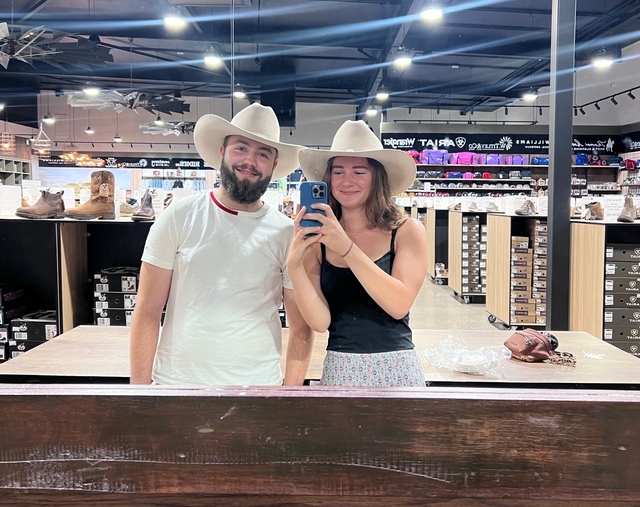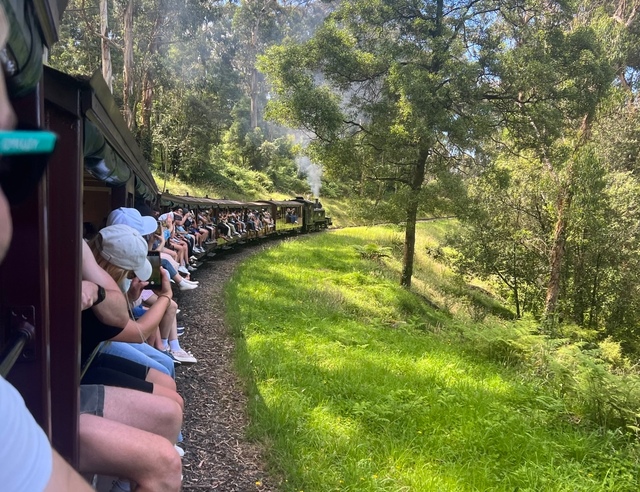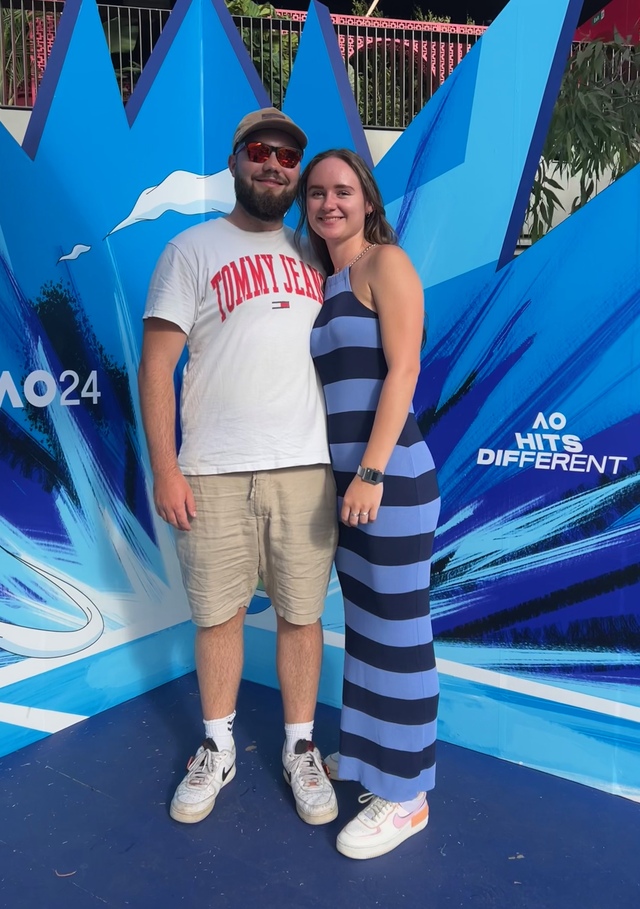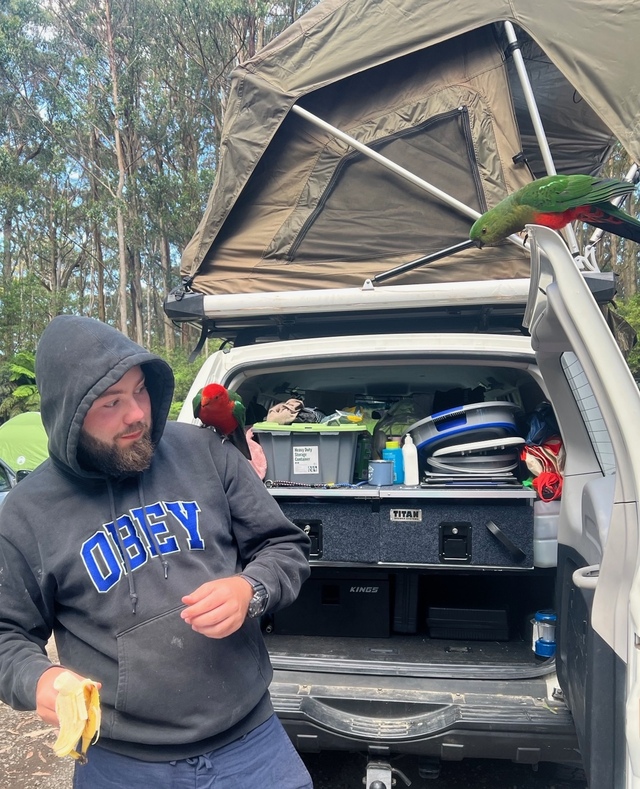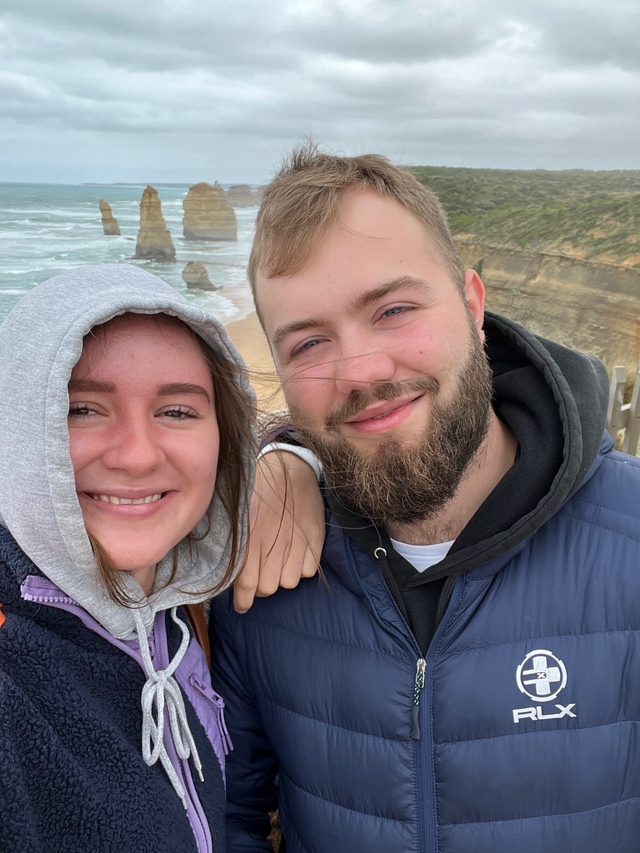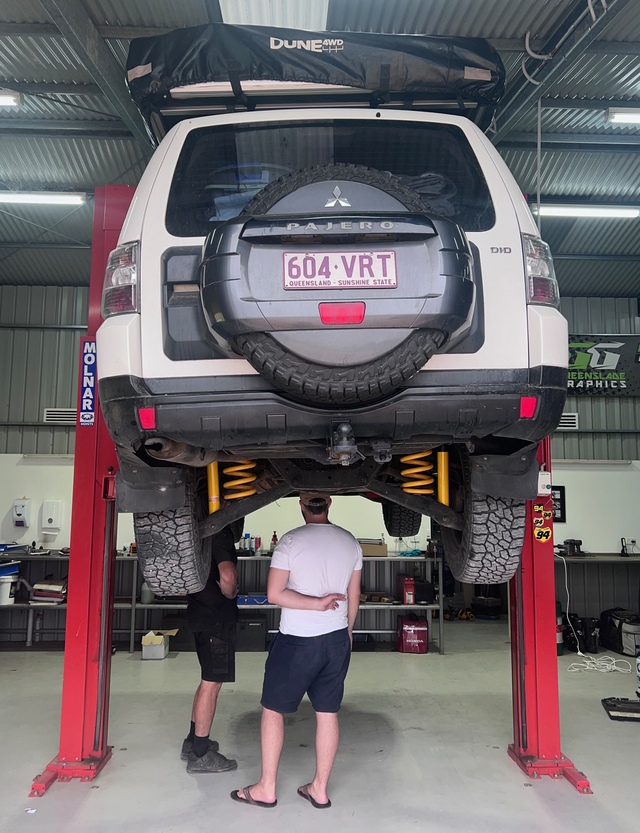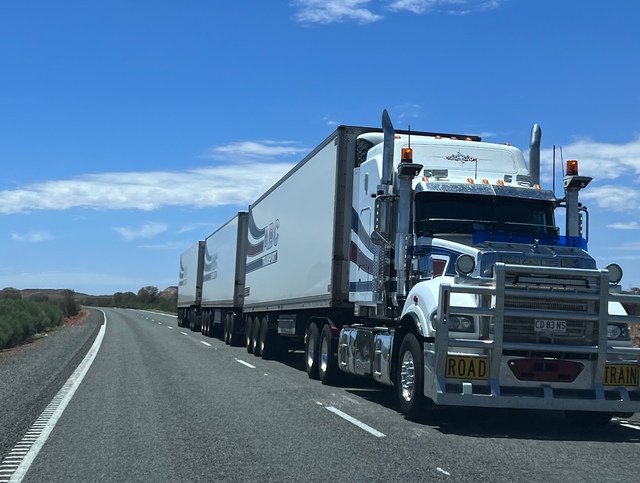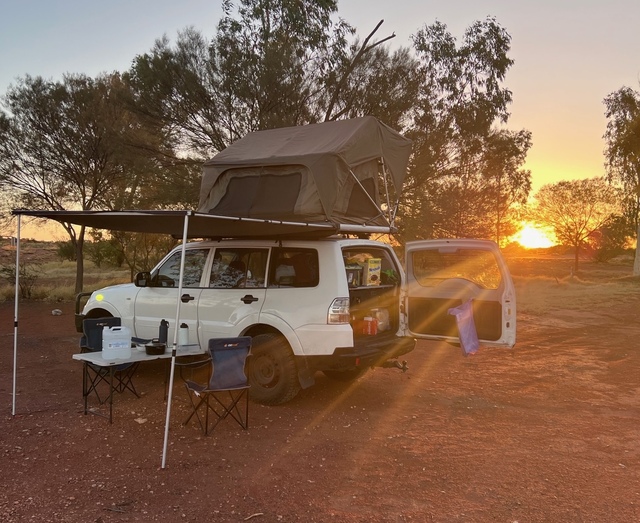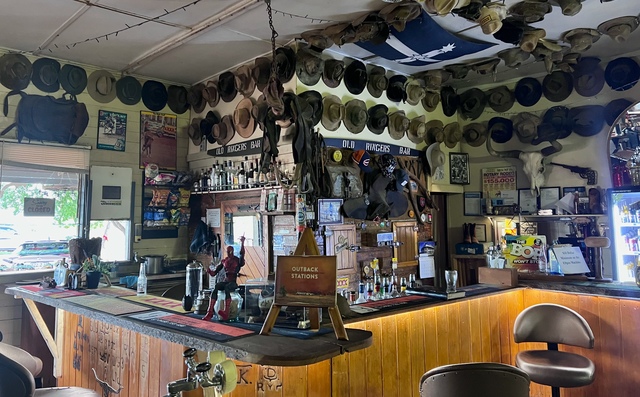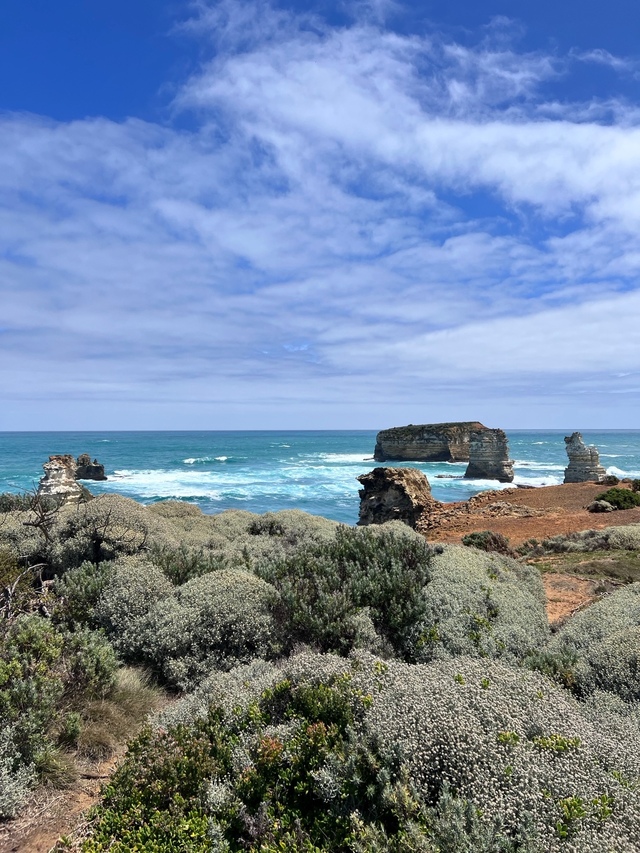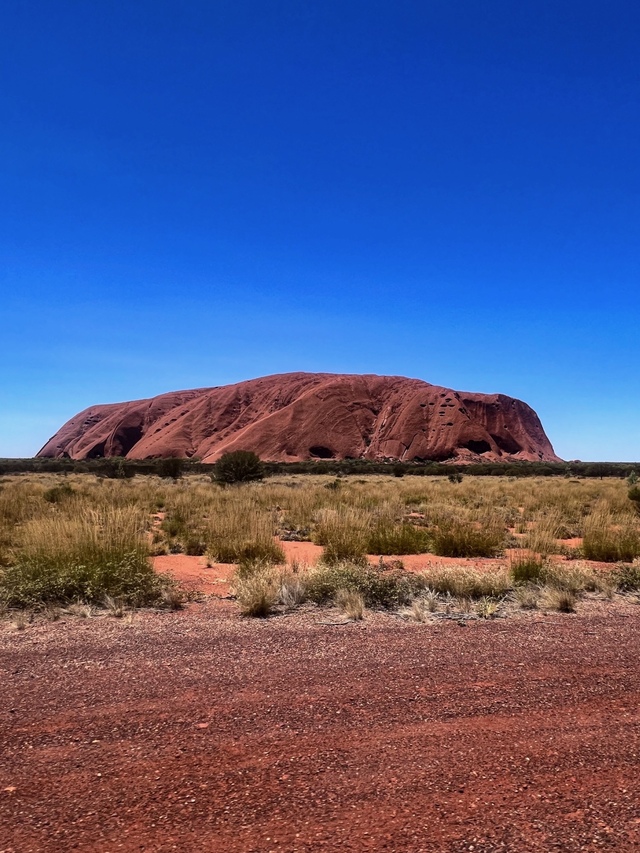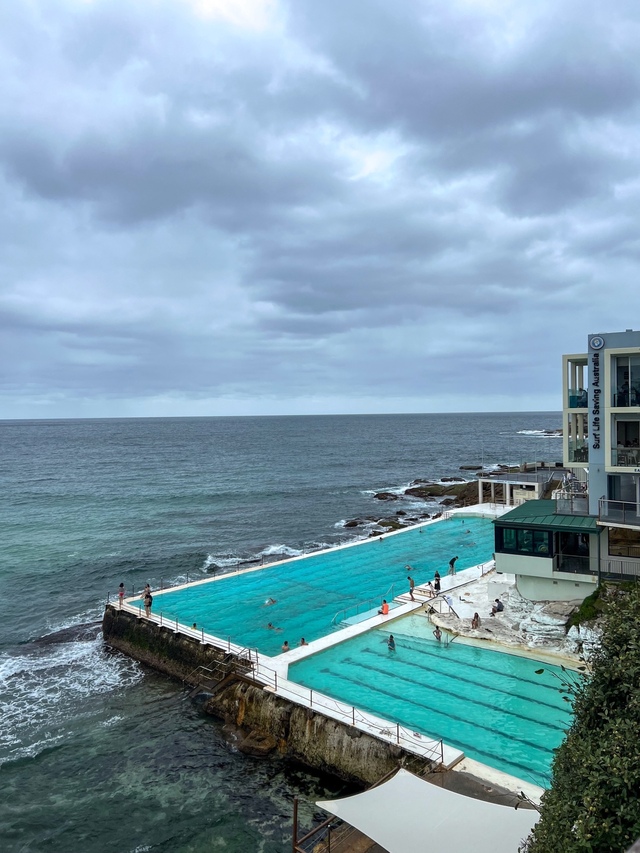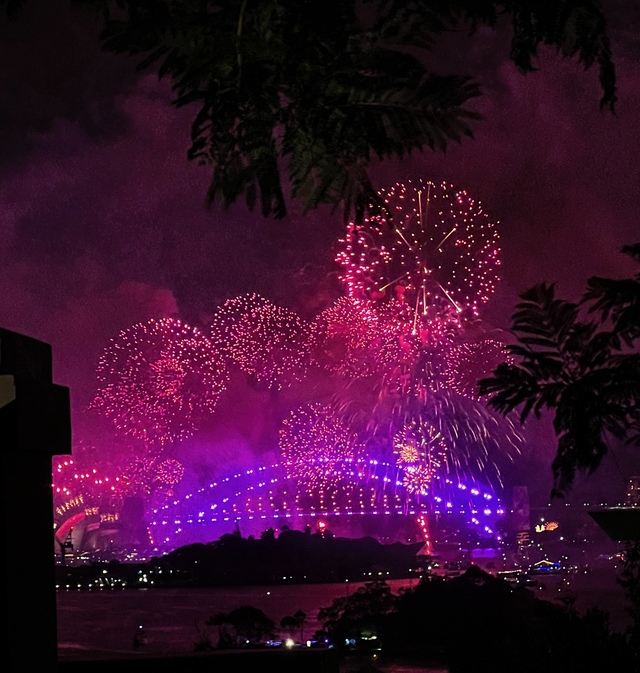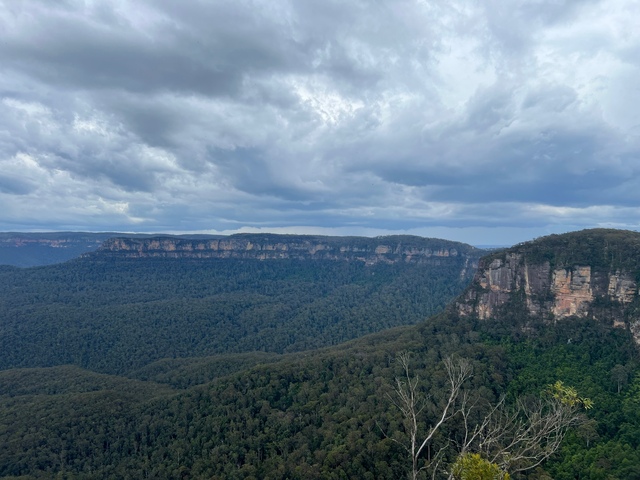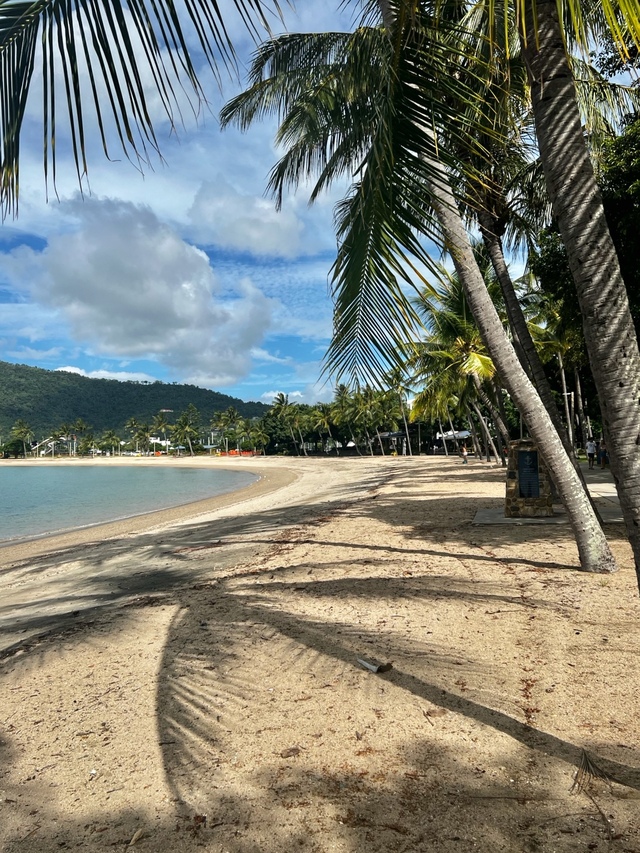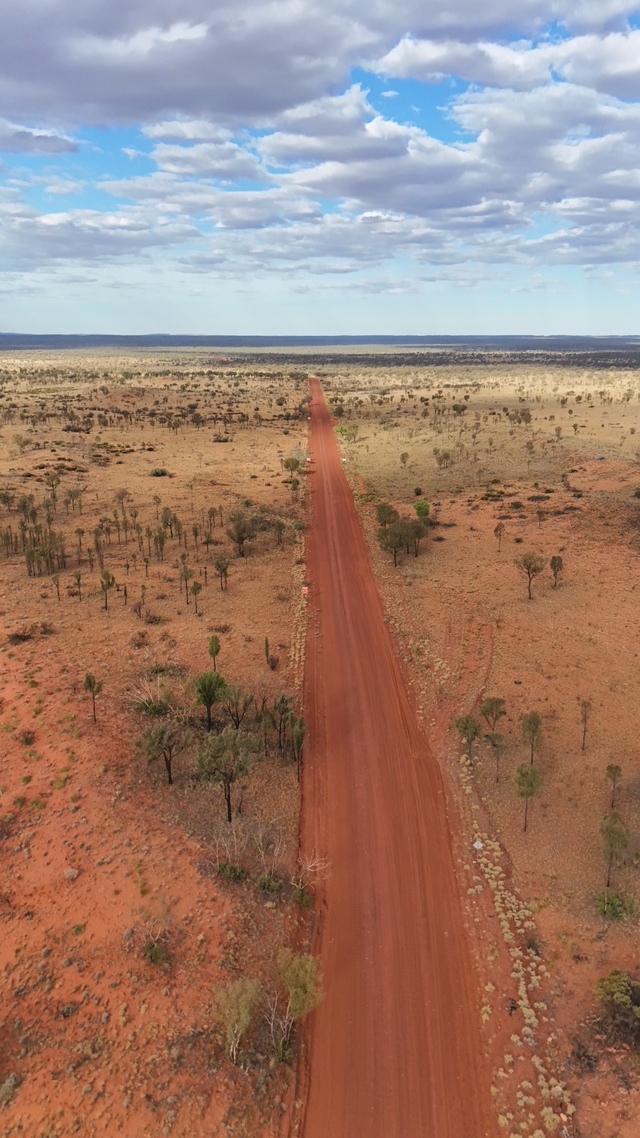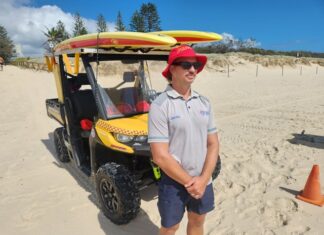PRECEDE
Seeing and understanding Australia is one thing for those who speak the language. Imagine the challenges, surprises, lessons learned and experiences for two German university students here for the first time, to study and find time to explore this wide, brown land. ERLE LEVEY finds out.
BREAKOUT QUOTE
“We were warned everything can kill you but in the first nine weeks we didn’t see anything that could. Be careful, but not afraid.”
Australia, it’s a big country but not everyone gets to experience the size and the different aspects of this continent.
Imagine the impact of seeing the country for the first time on the two 20-something exchange students.
Flying over one country for more than six hours – about the same flying time as across all of Europe, from London to Athens, Greece.
Bjoern Kruthoff and Johanna Parth are on an exchange visit to the University of Sunshine Coast (UniSC) from the RheinAhr campus of Koblenz University.
We first met the students about this time last year at the campus in Remagen, on the Rhine River. It was part of an exchange tour by lecturers from the Sunshine Coast.
Bjoern and Johanna we’re both excited and enthusiastic at the prospect of spending a year of studies in Australia as well as finding extra time for travel.
We caught up with them last September, shortly after their arrival, to get their initial reaction to life Down Under.
They expected to be surprised and delighted by what they found, particularly with the wildlife and the broad landscape. Yet they were also ready for the challenges of studying on the other side of the world.
Last month it was time for another coffee and the chance to learn about some of the adventures they’ve been on, some of the lessons learned at university as well as in the broader Australian landscape.
We were interested to find out what they thought about the diversity of wildlife, the environment, and the people. This, we soon found out, was not another travel story seen through the eyes of Australians, but rather a glimpse through the eyes of young people from overseas.
While there were surprises, they were not always the ones they expected.
“Flying into Australia was really cool,’’ Bjoern said. “We saw the sunrise and were able to see all of the country.
“It was really beautiful. The colours are different. The land was really red. It’s really, really different.
“We flew over little islands, the blue water and the sandy beaches.’’
Having to complete their final exams in Germany last summer before their plane flight, Bjoern and Johanna got off to a slow start.
They missed Orientation Week at UniSC and needed to find a place to stay.
Relying on public transport was something of a hurdle compared to Europe, but they purchased a Go Card through the Student Guild and then found an Airbnb in the neighbouring suburb of Palmview.
Classes at UniSC are smaller and more personal than at Remagen and Johanna was a little bit confused as to not knowing whether to raise her arm to ask or say something. “That’s what you do in Germany, and to this point I’m still not sure.
“I like this style of teaching, with feedback between lecturer and students.’’
Their interpretation of language was not that difficult despite the subtle differences between Australian and English.
“I can understand most, but it will get better,’’ Johanna said.
Apart from not being aware of the requirements to rent a place in Australia with references and bonds, the next problem was finding a good car.
“Quite a few of them were dodgy,’’ Bjoern said. “We chose a 2009 Mitsubishi Pajero but found out the manual transmission needed replacing.’’
That was one of the top tips for other exchange students: Be careful who you buy it from. Teach yourself a little bit about cars.
“The distances are so far here. When we told our parents, they said we were crazy to buy a car with so much high mileage on it.
“If you’re in Germany, you cannot imagine how big Australia is.
“We were warned everything can kill you but in the first nine weeks we didn’t see anything that could.
“Be careful, but not afraid.
“If you’re in Germany speaking about Australia, everyone is talking about snakes and spiders but the only ones we have seen are in the zoo or dead on the road.’’
On the first day at UniSC they saw the kangaroos that graze in the grounds, and sent photos of them home to their parents.
They were impressed by the sound of the kookaburras and the magpies but not ready for the lorikeets.
“Yeah, they were something crazy,’’ Bjoern said. “They are at the university – and at dusk are very loud.’’
A lecturer calls them the larrikins of the bush … it’s like they get drunk on the nectar of the gum trees.
“Then there was something like a chicken, directly in front of our door. It was black with red,’’ Bjoern said, describing a scrub turkey.
Johanna is from near Heidelberg and studied sports management in Germany so was naturally interested in Australia’s enthusiasm for sport, particularly as UniSC is recognised for the way it measures human movement, and the technology available.
“I’m hoping to get connections for my later life in work,’’ she said.
“I took a sports marketing course here and need to attend events, so we went to see Brisbane Lions.
“It was hard to understand the rules. It was also hard to understand the scoring.’’
Bjoern is from Bonn and his background is business related courses including management and innovation.
“I was hoping to be able to get better in English, in order to get used to working in English, and I chose one course in microeconomics – to see the point of view from Australia.’’
One of the first natural attractions they saw was Kondalilla waterfall walk – it was their first taste of rainforest and a good introduction to later journeys in Far North Queensland.
“We got a 4WD and went off-road early on,’’ Johanna said, “… more by accident.
“We wanted to go to Rainbow Beach and there were two ways. One went around and the other went straight … so we went straight.
“Bjoern was driving in first and second gear much of the way.’’
They camped right on the beach at Inskip Point and directly opposite K’gari (Fraser Island).
“It was a wonderful view to wake up to.’’
K’gari was quite packed but they were told some stories from locals as to what it was like in the past.
The surf beach at Mooloolaba was an experience, and their landlord had told them about the need to be aware of currents and rips.
They explored Noosa National Park and Eumundi Market, then made the most of the beach barbecues at Alexandra Headland, Mooloolaba and Point Cartwright.
“There were a lot of barbecue stations around,’’ Bjoern said. “We went to a local butcher and had good meat.
“Then there was the time a kookaburra stole a pork rib from my plate.’’
Johanna explained that at a campground on their travels they heard this really loud noise – it was a snake falling out of a tree as it was trying to eat a fruit bat.
They invested in a roof-top camper and explored areas such as Elliott Heads and Airlie Beach, then Toowoomba.
“We were having fun with the names,’’ Johanna said, “… Bli Bli, Buderim, Maleny.
“If you read them, we pronounce them completely wrong.’’
Right from the first few months, crossing the world and exploring such a vast continent gave a feeling of strong personal growth, Johanna said.
“It was especially rewarding to have my mother and brother who visited us here.
“We drove to Byron Bay and Sydney then experienced New Year’s Eve … it was packed. It was amazing.
“From now on I’m responsible for planning holidays in my family. We also went to Bali on a semester break. They were amazed.
“We explored the Blue Mountains and the Hunter Valley – there were some unplanned stops such as seeing a lot of cows on the street of a town.
“Our jerry can was used once because we didn’t have enough fuel, but we were really happy about having it. And of course we did some camping on beautiful campsites in nature.’’
It was raining for the two weeks they took to get to Sydney and Bjoern found that by checking the weather map that by driving about three hours inland it was sunshine and 35 degrees.
They went in the direction of Orange and found some wineries by accident.
Bjoern and Johanna’s journey took them to Melbourne and the Great Ocean Road.
In Melbourne they were lucky enough to see the Australian Open and caught the historic Billy Puffing Railway in the Dandenong Ranges.
They experienced hinterland forests, parrots, sheep and more kangaroos.
In Adelaide they checked the car was ready for the drive north to Uluru, Alice Springs and Tennant Creek.
“We made sure that all springs and struts were replaced so nothing could happen,’’ Bjoern said.
“The brushes had discontinued and they now only sell the entire shock absorber units.
“An older vehicle would have been easier to work on or find replacement parts.’’
Other lessons learned for driving in the Outback include connecting with fellow 4WD owners where possible.
Be as prepared as possible with the car and find the best connectivity and coverage with phones.
“We were thinking of getting Starlink,’’ Johanna said, “for satellite connection. Others we came across were really grateful – they were watching Netflix in the middle of nowhere.
“We decided on UHF as a compromise.’’
Coober Pedy provided them with a town like no other – almost completely underground because of the opal mining and the escape from the heat of the day.
It was so interesting, Johanna said, with all the heaps of dirt from the mines and the vents to get air underground.
“We drove to Uluru,’’ Bjoern said, “where we were almost the only ones because of the crazy heat there.
“But we had some nice sunsets while driving straight for hours.
Uluru was one of the most impressive sights they came across, especially the size and how it changes colour during the day from sunrise to sunset.
“It was in January and the number of bush flies … I wasn’t expecting that. They were everywhere.
“We came prepared, but it was something else.
“There was dust everywhere in the car when we were Outback.
“We drove from Uluru to Kings Canyon then on an off-road track to Alice Springs – there was quite a lot of corrugation but it was really nice. We saw wild camels and horses. There was a story of people catching them and exporting them to Saudi Arabia.’’
In Port Augusta they had been warned about care being needed with road trains.
“We saw a lot but it was not a problem,’’ Bjoern said. “We weren’t travelling fast and had a UHF radio.’’
Recommendations for driving are to take a lot of water and a good tool kit.
“We did a lot of negotiating to find the halfway point for both of us,’’ Johanna said. “If I wasn’t here he would spend too much money on the car.’’
To which Bjoern replied: “I always have the argument, that if you’re going to get stuck then I have to repair it.’’
“Pack enough supplies for a long time. We keep our families up-to-date where we are with GPS and a tracker, so they can understand what we are seeing.
“Take extra fuel. We were quite well prepared but the one time when we had to use our jerry can, we were really happy about having it.’’
They thought about driving up to Darwin but there was a lot of flooding from the summer rains, so at Tennant Creek they headed for Mt Isa.
The roads into Queensland had been closed for two weeks which meant Bjoern and Johanna stayed one night at a hotel. When some traffic was allowed through they followed the trucks.
“There was still a lot of water on the side of the roads, and some parts where we had to drive through it.
“We tried to get food in Mt Isa but Hungry Jack’s was sold out. There were no drinks. There was no food. There were no trucks coming in to stock the supermarket. Everything was gone.’’
They found the Outback Queensland pubs had camping spots behind them so they could just stay there for free and have dinner there.
Like something out of the classic Australian film Crocodile Dundee, the pub at Prairie had a water buffalo out the back.
“It was making noises in the middle of the night,’’ Bjoern said.
“It was a really small town and there were lots of hats on the walls of the pub.
“The noise the water buffalo made was really weird to hear in the middle of the night. I was shining the flashlight to find out where it was and all I could see was the two eyes.’’
The Outback was more like the Australia that Bjoern and Johanna had expected, except they had more trouble understanding the broader accent and sayings.
“Everyone has been nice,“ Bjoern said.
“We came in contact with more aborigines in the country areas than on the coast.
“We learned a lot about the aboriginal culture.
“But it was a little bit weird because so many people warned us about the culture at Uluru and Alice Springs, so we were a little bit apprehensive.’’
Did you need to be?
“No, not at all,’’ Johanna said.
“There was no need to worry, but we were … because everyone had told us.
“What surprised us was the division around The Voice … we didn’t understand that.’’
Far North Queensland was a delight, even though it was February and very humid.
“We really enjoyed the rainforest of the hinterland. The waterfalls in Cairns.
“It was hot, humid and wet. As soon as we got out of the tent we were sweating.
“Other travellers had their rooftop camper collapse due to the heavy rain.
“We were snorkelling on the Great Barrier Reef and saw coral as well as plenty of fish and a turtle.
“We also saw a pretty big spider.’’
The next step for this adventurous couple is to drive to Darwin then down the coast of Western Australia to Perth.
Back in Germany they will finish two more semesters then write their Bachelor thesis.
After that Johanna will do internships, for a year or two to experience work life.
“My dream is to work for the German Handball League or a club, either in marketing or event management. Then maybe with a sports brand such as Nike.’’
When Bjoern came to Australia he wasn’t sure of his career direction but will try some experience before really looking.
“Maybe get some internship but now I know I want to go in the motor sports direction. Start at a car manufacturing organisation in Germany such as Audi or maybe Porsche.
“I’m not exactly sure, it’s just a plan.’’
One thing they are more certain about is taking the opportunity to come back here to work.
“I like the way you can drive out of the city and within three or four hours you can be in your 4WD and in the Outback or something,’’ Johanna said.
One thing they learned was The Great Barrier Reef is about the same area as Germany and that New South Wales is one-and-a-half times the size of France.
That said, Bjoern and Johanna loved the graduation ceremony at UniSC, especially the fact they were wearing gowns as they don’t get that at their university in Germany.
As a consequence they felt like they were in Harry Potter.
Business It was a great privilege and thrill to attend the Ceremony of Completion for our international students at University of the Sunshine Coast last Friday. My colleagues and I admire these remarkable young adults who travel from various regions of the globe to study at UniSC. Their determination to learn, and commitment to study, often in English as a second or foreign language – is astounding.
Lecturer in the School of Business and Creative Industries at UniSC, Dr Melissa Innes, who met Bjoern and Johanna in Germany last year before their journey, said it was an honour to share the morning with two such inspirational young people.
“It was a great privilege and thrill to attend the Ceremony of Completion for our international students at University of the Sunshine Coast.
“My colleagues and I admire these remarkable young adults who travel from various regions of the globe to study at UniSC. Their determination to learn, and commitment to study, often in English as a second or foreign language – is astounding.
“Johanna and Bjoern have seen more of Australia over 12 months in their study breaks, more competently than anyone I know.
“It’s been an absolute privilege to share their journey and hear their stories.
“Congratulations Johanna and Bjoern for achieving more than most of us do in a lifetime.’’
And that highlights the benefits of exchange programs, especially in educational facilities.
Understanding and learning from other cultures is of prime importance as we face the future and whatever it may bring.

